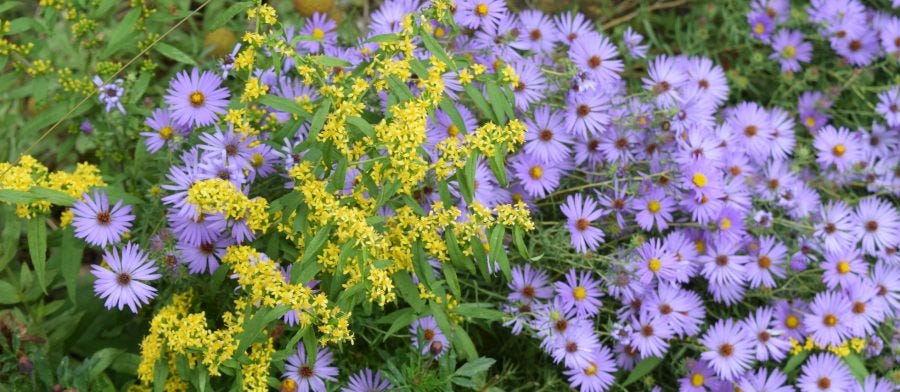Why the World is So Beautiful
The light purple of asters and the glowing yellow of goldenrods appear as if an artist carefully selected these flowers to grow together. Their hues seem to naturally attract the eyes.
It is no coincidence.
Together they are a masterpiece of evolution.
As botanist and author, Robin Wall Kimmerer, describes in her book, "Braiding Sweetgrass", "Those complimentary colors of purple and gold together, being opposites on the color wheel, they’re so vivid, they actually attract far more pollinators than if those two grew apart from one another."
It’s both an art and science.
But the science behind beauty that Robin Wall Kimmerer desired to study was initially shunned.
When she interviewed to pursue her botany degree she told the professor she wanted, "to learn about why asters and goldenrod looked so beautiful together."
The scientist retorted, "I must tell you that that is not science. Beauty is not the sort of thing with which botanists concern themselves.”
She tried again, "I’d like to learn why plants make medicines, why willow bends for baskets and why strawberries are sweeter in the shade."
But the professor again retorted, “Also not science, and if you want to study beauty, you should go to art school.”
In large part, the flowers that were limited in their beauty or color did not make it through evolution's competition.
What we are left with today, because of evolution, is flowers with vibrant color and beauty, and thanks to Robin Wall Kimmerer's persistence, there is scientific evidence.
Learn more about Robin Wall Kimmerer’s work on the OnBeing podcast.



